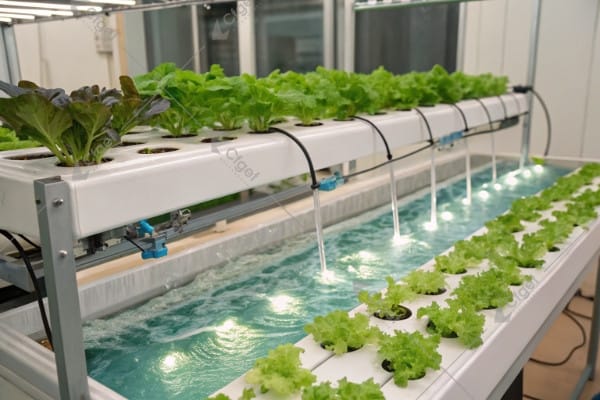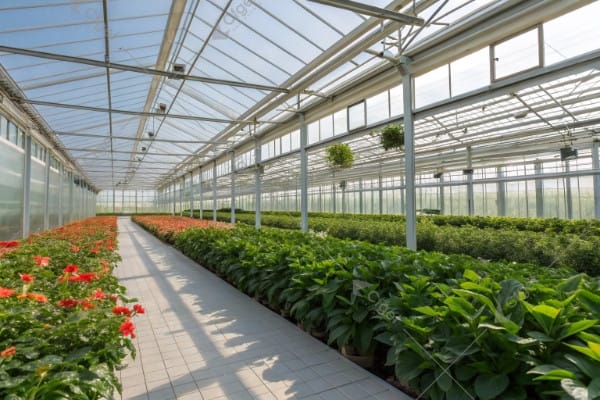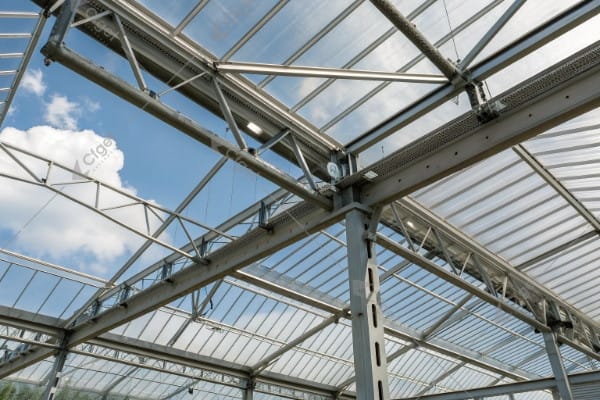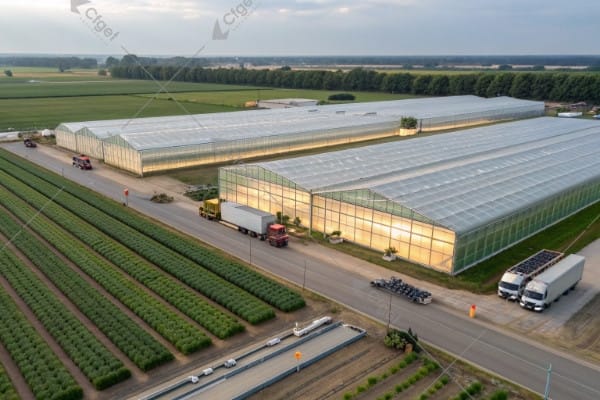The cannabis industry faces unique cultivation challenges that impact yield quality and profitability. Without proper growing environments, producers risk crop failure and significant financial losses.
Commercial cannabis greenhouses offer the perfect balance of natural light utilization, environmental control, and cost efficiency. Purpose-built structures with light management systems, climate controls, and proper automation deliver consistent high-quality yields while maximizing ROI.
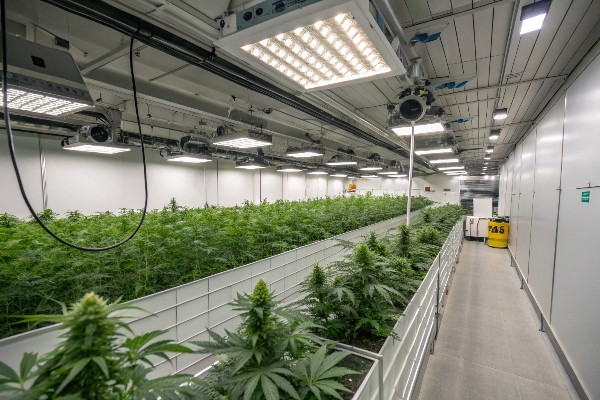
As someone who has designed greenhouse systems for over two decades, I’ve witnessed the cannabis industry’s transformation firsthand. When legal cannabis cultivation began expanding, many growers attempted to adapt existing agricultural structures with mixed results. Today, purpose-built cannabis greenhouses have become the gold standard for commercial operations seeking consistent production and sustainable practices.
Don’t Miss:——Growing Perfect Tomatoes: Why a Greenhouse Makes All the Difference
Why Greenhouses Are the Superior Choice for High-Quality Cannabis Cultivation?
Cannabis growers struggle with inconsistent results when using traditional growing methods. Indoor facilities drain profits through massive energy consumption while outdoor farms face unpredictable weather and contamination risks.
Greenhouses provide the ideal middle ground by harnessing natural sunlight while offering environmental control. They reduce energy costs by up to 40% compared to indoor operations, protect against pests and contaminants, and enable year-round production with light deprivation capabilities.
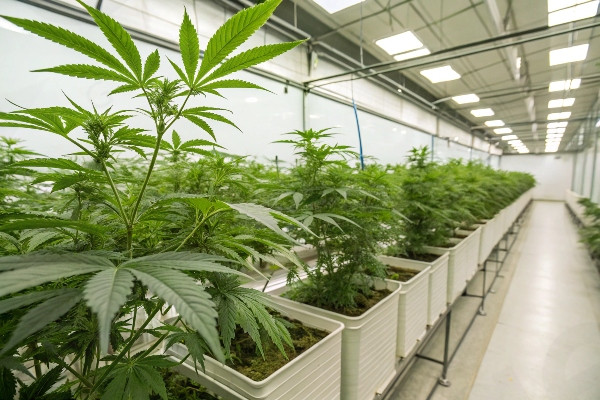
I remember visiting a client in Washington state who had transitioned from an indoor facility to our greenhouse system. Their energy bills dropped dramatically while product quality improved. This pattern repeats across regions and climates because greenhouses leverage nature’s benefits while mitigating its challenges.
The superiority of greenhouse cultivation comes from several key advantages. First, plants respond positively to natural sunlight’s full spectrum, which artificial lighting struggles to replicate completely. The result is cannabis with better terpene profiles and cannabinoid development. Second, modern greenhouse designs allow for precise environmental control without the enormous energy footprint of indoor operations.
For cannabis specifically, light management becomes crucial. Our specialized light-proof systems allow for complete control over photoperiods, triggering flowering cycles exactly when desired. This precision enables multiple harvests annually while maintaining product consistency. The supplementary lighting systems we integrate ensure production continues even during cloudy days or shorter winter daylight hours.
Water and fertilizer management represents another area where greenhouses excel. Our integrated irrigation and fertigation systems deliver precise nutrient formulations directly to plants, minimizing waste and maximizing uptake efficiency. This level of control simply isn’t possible with outdoor cultivation, where runoff and uneven distribution remain persistent problems.
Temperature and humidity management, critical for preventing mold and mildew issues common in cannabis cultivation, becomes much more manageable in a greenhouse environment. Our climate control systems maintain optimal conditions through every growth stage, from propagation through flowering and harvest.
You might like:——The Ultimate Guide to Commercial Strawberry Greenhouses: Boost Your Yield & Profits
Key Differences: Cannabis Greenhouses vs. Indoor Grow Rooms vs. Outdoor Farms?
Cultivators often struggle to choose between growing methods, risking either excessive operational costs or vulnerability to environmental factors. Making the wrong choice can lead to years of suboptimal production and wasted investment.
Cannabis greenhouses combine the best aspects of indoor and outdoor cultivation while minimizing drawbacks. They utilize free sunlight (reducing electricity costs by 30-50%), provide environmental protection, allow year-round production, and typically require 25-40% less capital investment than equivalent indoor facilities.
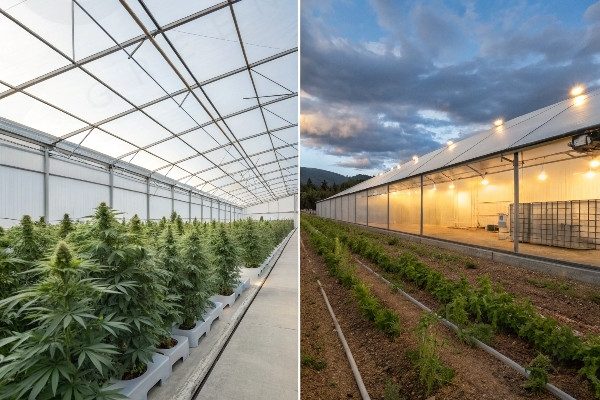
When I consult with new cannabis operations, I often find they’re weighing these three approaches without fully understanding the long-term implications of each. Let me break down the fundamental differences that impact both initial investment and ongoing operations.
Indoor grow rooms offer complete environmental control but at tremendous cost. These facilities rely entirely on artificial lighting, which creates two significant challenges: massive electricity consumption and heat management. A 10,000 square foot indoor facility typically requires 400-600 kilowatts of lighting power alone, plus additional energy for cooling systems to remove heat generated by those lights. This translates to monthly electricity bills that can exceed $40,000 in many regions. While these systems produce consistent results, their operating expenses significantly impact profit margins.
Outdoor farms sit at the opposite end of the spectrum. They utilize free sunlight and natural rainfall, dramatically reducing operational costs. However, they surrender control to nature’s whims. A single unseasonable frost, pest infestation, or extreme weather event can destroy an entire crop. Additionally, most regions limit outdoor cannabis to a single annual harvest, constraining revenue potential. Contamination from neighboring farms or wild pollen also poses constant quality control challenges.
Greenhouses offer a strategic middle ground. Modern cannabis greenhouse designs incorporate light deprivation systems that allow growers to control day length and trigger flowering cycles on demand. This enables multiple harvests annually while utilizing free sunlight as the primary light source. During shorter winter days or cloudy conditions, supplementary lighting systems activate to maintain optimal light levels.
The closed nature of greenhouse environments provides protection from pests, contaminants, and extreme weather while allowing for climate control systems that maintain ideal temperature and humidity ranges. Unlike indoor facilities that must replicate the entire growing environment artificially, greenhouses primarily focus on supplementing or moderating natural conditions.
From a financial perspective, greenhouse facilities typically cost 25-40% less to build than equivalent indoor operations while reducing ongoing energy expenses by 30-50%. The energy savings alone often recovers the initial investment difference within 2-3 years of operation.
Essential Features Your Commercial Cannabis Greenhouse Must Have for Success?
Many cannabis greenhouse projects fail because they use standard agricultural designs without cannabis-specific modifications. These inadequate structures lead to light leaks, environmental control issues, and ultimately, inconsistent crop quality.
Successful cannabis greenhouses require specific features: light-deprivation systems1 for photoperiod control, supplemental lighting for consistent production, automated climate controls2, proper ventilation with carbon filtration, integrated irrigation/fertigation, and robust security measures that meet regulatory requirements.

I recently worked with a client who had purchased a standard agricultural greenhouse and attempted to retrofit it for cannabis production. Within months, they encountered serious problems: light leaks disrupted flowering cycles, inadequate ventilation created mold issues, and insufficient security measures nearly cost them their license. The expensive lessons learned showed why purpose-built solutions matter.
When designing cannabis-specific greenhouses, several critical systems must be integrated from the beginning. First, the light-proof system forms the foundation of production control. Cannabis flowering is triggered by specific dark period durations, typically 12 hours of uninterrupted darkness. Any light leaks during this critical period can stress plants, reduce yields, or even cause them to revert to vegetative growth. Our blackout systems achieve complete light deprivation with overlapping seals, light traps at ventilation points, and properly designed entry points.
The supplementary lighting system plays an equally important role. While greenhouses utilize natural sunlight, seasonal variations and weather conditions can reduce light intensity below optimal levels. Our design approach incorporates high-efficiency lighting systems that activate automatically when sensors detect insufficient natural light levels. These systems typically utilize LED technology for energy efficiency, with specific spectrum outputs tailored to different growth stages. For vegetative growth, blue-dominant spectrums promote compact, bushy growth, while red-dominant spectrums enhance flowering and resin production during bloom stages.
Water and fertilizer management systems form another crucial component. Cannabis has specific nutritional requirements that change throughout its lifecycle. Our integrated fertigation systems allow precise delivery of customized nutrient formulations based on growth stage. These systems monitor electrical conductivity (EC) and pH levels in real-time, making automatic adjustments to maintain optimal ranges. The result is consistent nutrition without waste or the labor costs associated with manual mixing and application.
Climate control represents perhaps the most complex aspect of cannabis greenhouse design. Different growth stages require different environmental conditions. Propagation and early vegetative growth benefit from higher humidity (60-70%) and moderate temperatures (72-78°F). Flowering stages perform better with lower humidity (40-50%) to prevent mold issues while maintaining similar temperature ranges. Our zoned climate control systems allow for separate environmental management in different greenhouse sections, optimizing conditions for each growth stage simultaneously.
Security considerations cannot be overlooked. Most regulatory frameworks require strict security measures for cannabis operations. Our greenhouse designs incorporate features like controlled access points, motion detection systems, video surveillance coverage, and perimeter monitoring. These systems integrate with the greenhouse environmental controls through unified management platforms that allow both onsite and remote monitoring.
Understanding the ROI Potential of Investing in a Purpose-Built Cannabis Greenhouse?
Cannabis entrepreneurs often underestimate the financial impact of their cultivation facility choice. Selecting the wrong growing environment can lock operations into years of excessive costs, reduced yields, and diminished product quality.
Purpose-built cannabis greenhouses typically deliver ROI within 2-3 years through reduced energy costs (30-50% savings vs. indoor), increased production cycles (4-6 annual harvests possible), lower labor requirements, and consistent high-quality yields that command premium prices.
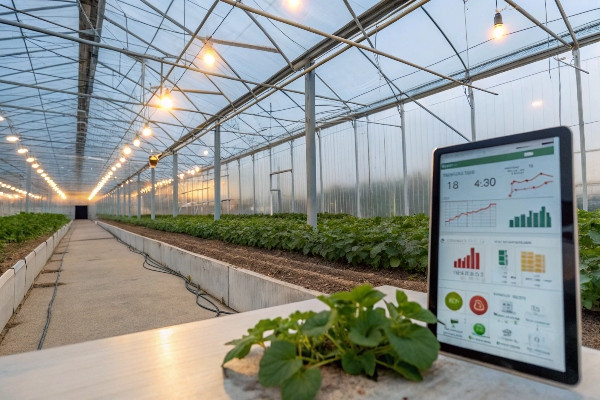
I worked with a mid-sized producer in Colorado who transitioned from a 15,000 square foot indoor facility to our 20,000 square foot purpose-built greenhouse. Their initial concern was the capital investment, but our detailed ROI analysis proved compelling. After two years of operation, their production costs dropped from $842 per pound to $487 per pound while maintaining equivalent quality metrics.
The financial advantages of purpose-built cannabis greenhouses stem from several factors that affect both operational costs and revenue potential. On the cost side, energy consumption represents the most significant difference. Indoor facilities require artificial lighting for 12-18 hours daily, plus constant climate control to manage heat generated by those lights. Greenhouses utilize free sunlight as the primary light source, with supplemental lighting only during cloudy periods or to extend daylight hours seasonally.
This energy difference creates dramatic savings. A 10,000 square foot indoor facility typically consumes 400-600 kilowatts for lighting alone, plus additional energy for cooling. The equivalent greenhouse might use only 100-150 kilowatts during periods requiring supplemental light, with many days requiring no lighting electricity at all. When calculated annually, this often represents savings of $150,000-$250,000 in electricity costs for operations of this size.
The revenue side shows equally compelling advantages. With properly designed light deprivation systems, cannabis greenhouses can produce 4-6 harvest cycles annually, compared to just one for outdoor operations. This production capacity allows businesses to maximize revenue from their licensed canopy area. Additionally, the controlled environment produces consistent quality that typically commands premium market prices compared to outdoor-grown cannabis.
Labor efficiency also contributes to greenhouse ROI. Automated systems for irrigation, climate control, and light management reduce daily operational labor requirements. Our larger commercial installations typically show 25-40% lower labor costs per pound produced compared to equivalent indoor operations, which require more intensive management of environmental systems.
Construction costs represent the initial hurdle, but even here, greenhouses offer advantages. While purpose-built cannabis greenhouses cost more than standard agricultural structures, they typically require 25-40% less capital investment than equivalent indoor facilities. This reduced upfront expenditure accelerates time to profitability and improves overall return on investment metrics.
When calculating total ROI, we typically see purpose-built cannabis greenhouses reaching break-even within 24-36 months of operation, with some high-efficiency operations achieving this milestone even sooner. For operations in regions with high electricity costs or favorable climate conditions, these advantages become even more pronounced.
Conclusion
Purpose-built cannabis greenhouses offer the ideal balance of environmental control, energy efficiency, and production capacity. By incorporating specialized systems designed for cannabis cultivation requirements, these facilities deliver consistent quality while maximizing profitability and sustainability.

